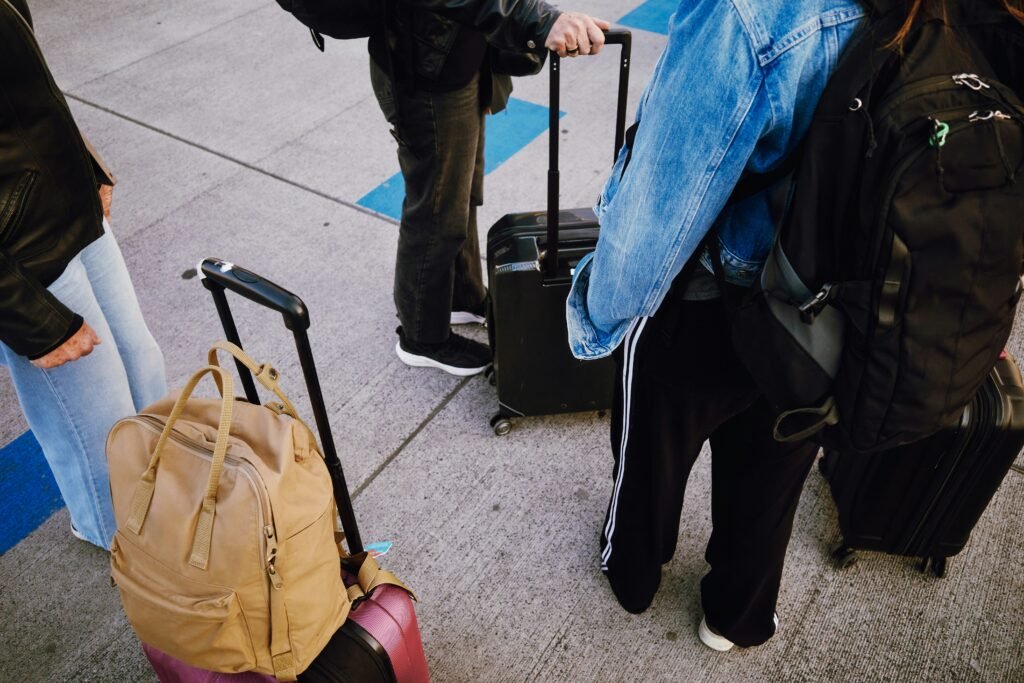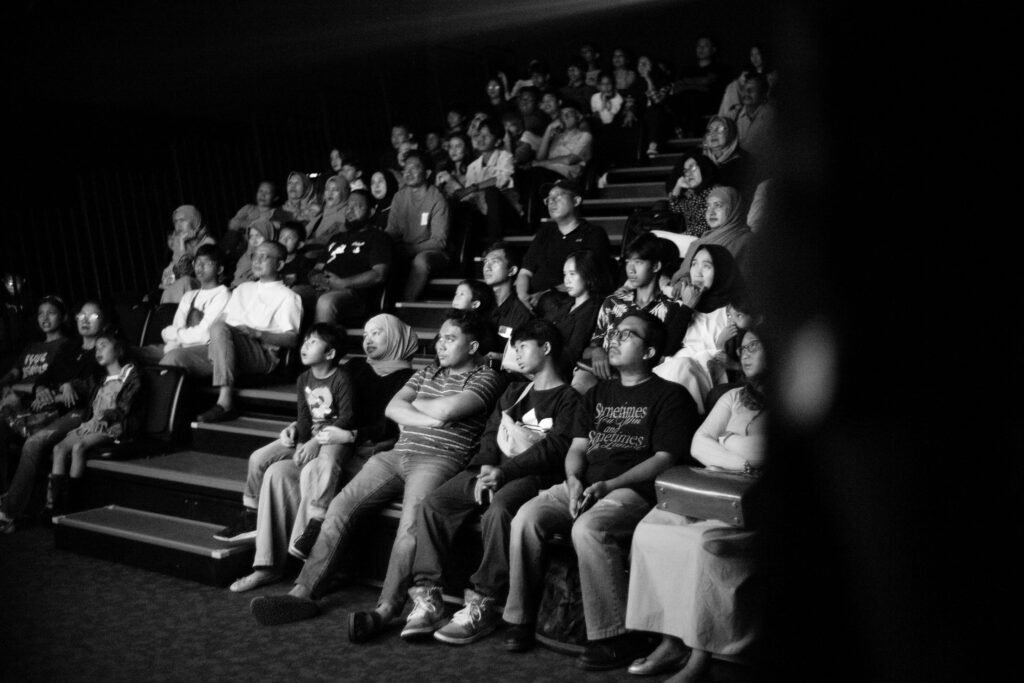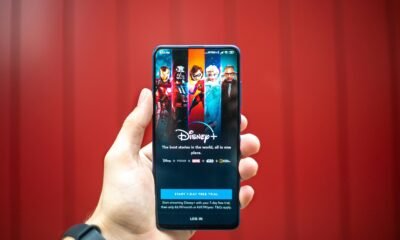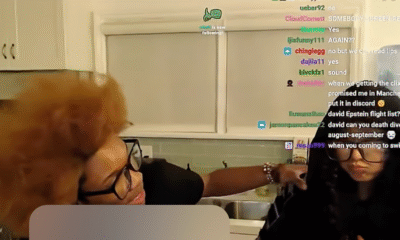Business
‘Soft landing in the bag’: Wall Street rallies as Fed signals rate cuts on December 14, 2023 at 6:30 pm Business News | The Hill
Financial markets rallied Thursday as Wall Street grows increasingly confident the economy has achieved a “soft landing” from high inflation without a recession.
The stock market stretched a record-breaking rally into a second day after the Federal Reserve signaled Wednesday that it could begin cutting interest rates next year.
“The Fed believes they have the soft landing in the bag. Clearly, markets believe them now,” Callie Cox, a U.S. investment analyst at eToro, said in a statement.
The Dow Jones Industrial Average was up 92 points — roughly 0.3 percent — just before 1:30 p.m. Thursday after hitting an all-time high Wednesday, surpassing 37,000 for the first time.
The rally began after the Fed announced it would hold rates steady for a third consecutive meeting and suggested it was likely nearing an end to its rate hikes.
The Dow surged 1.4 percent on the news, adding more than 500 points before markets closed Wednesday, while the S&P 500 jumped 1.37 percent and the Nasdaq Composite rose 1.38 percent. All three major indices remained up on Thursday morning.
The celebratory mood on Wall Street reflects a remarkable shift from last year, when most economists were offering dismal projections and largely dismissing the Biden administration’s hopes of a soft landing.
Annual inflation has eased significantly since last summer, when it reached a 40-year high of 9.1 percent. As of November, consumers prices were up 3.1 percent annually, still above the Fed’s 2-percent target but showing a marked improvement over last year.
While the central bank’s aggressive rate hike campaign appears to have helped cool inflation, it has not translated into higher unemployment rates, defying standard economic assumptions. The jobless rate has remained below 4 percent, with the November jobs report showing the rate edged down to 3.7 percent.
The economy has also continued to grow despite widespread predictions of a recession last year, with U.S. gross domestic product (GDP) exceeding 2 percent for the last five quarters.
In the face of the latest positive economic data, Fed Chair Jerome Powell said the central bank is “likely at or near the peak rate for this cycle,” and all but three Fed officials indicated in economic projections released Wednesday that they expect at least two rate cuts next year and a plurality expect three cuts.
“Fed members now see a few rate cuts in 2024, and these seem to be celebratory rate cuts too,” Cox said. “The latest economic projections tell you as much.”
“The Fed lowered their inflation estimates, yet they didn’t change their job market expectations,” she continued. “They expect inflation to come down without a serious spike in unemployment. That’s the definition of a soft landing.”
The Fed adjusted its inflation forecast downward in Wednesday’s economic projections, predicting that annual inflation would fall to 2.4 percent in 2024 and 2.1 percent in 2025, while leaving its unemployment projections largely unchanged.
Nancy Vanden Houten, lead U.S. economist at Oxford Economics, noted that the central bank’s recent communication about its likely course of action on rate hikes “has become decidedly less hawkish.”
“The Fed isn’t taking additional rate hikes completely off the table, but its latest set of economic projections and Fed Chair Powell’s post-meeting press conference suggest the next policy move will be a rate cut,” Vanden Houten said in a research note.
While Oxford Economics initially anticipated that the first rate cut would occur in the third quarter of 2024, Vanden Houten said the Fed’s economic projections and Powell’s remarks on Wednesday “are sending a message that rate cuts are likely to come sooner than we currently assume.”
However, she added, “We still think the Fed will be patient before lowering rates and is unlikely to move before the middle of the year.”
Cox similarly warned that rates could remain high for a while longer, emphasizing that “nobody has a crystal ball.”
Powell also offered a word of caution on Wednesday, warning that it’s too soon to know if inflation is on track to return to pre-pandemic levels and refusing to rule out future rate hikes.
“We’ve reached a possible inflection point,” Elizabeth Renter, a data analyst at NerdWallet, said in a statement. “The ideal scenario: the economic stars (along with monetary policy) have aligned to produce the soft landing where inflation comes down to 2 percent without a precipitous ascent in unemployment.”
“But we can’t be certain of this yet,” Renter added. “Like so much in the economy, we won’t know how this ends until after it ends.”
Whether the Fed succeeds could have a signficant impact on the 2024 election and President Biden’s bid to secure another presidential term.
Despite the sharp drop in inflation and strong economic data, Americans have grown increasingly frustrated with the state of the economy after years of paying inflated prices.
Business, Economy Financial markets rallied Thursday as Wall Street grows increasingly confident the economy has achieved a “soft landing” from high inflation without a recession. The stock market stretched a record-breaking rally into a second day after the Federal Reserve signaled Wednesday that it could begin cutting interest rates next year. “The Fed believes they have the…
Business
Why 9 Million Americans Have Left

The Growing American Exodus
Nearly 9 million Americans now live outside the United States—a number that rivals the population of several states and signals a profound shift in how people view the American dream. This mass migration isn’t confined to retirees or the wealthy. Thanks to remote work, digital nomad visas, and mounting pressures at home, young professionals, families, and business owners are increasingly joining the ranks of expats.

Rising Costs and Shrinking Wallets
Living in the US has become increasingly expensive. Weekly grocery bills topping $300 are not uncommon, and everyday items like coffee and beef have surged in price over the last year. Rent, utilities, and other essentials also continue to climb, leaving many Americans to cut meals or put off purchases just to make ends meet. In contrast, life in countries like Mexico or Costa Rica often costs just 50–60% of what it does in the US—without sacrificing comfort or quality.
Health Care Concerns Drive Migration
America’s health care system is a major trigger for relocation. Despite the fact that the US spends more per person on health care than any other country, millions struggle to access affordable treatment. Over half of Americans admit to delaying medical care due to cost, with households earning below $40,000 seeing this rate jump to 63%. Many expats point to countries such as Spain or Thailand, where health care is both affordable and accessible, as a major draw.

Seeking Safety Abroad
Public safety issues—especially violent crime and gun-related incidents—have made many Americans feel unsafe, even in their own communities. The 2024 Global Peace Index documents a decline in North America’s safety ratings, while families in major cities often prioritize teaching their children to avoid gun violence over simple street safety. In many overseas destinations, newly arrived American families report a significant improvement in their sense of security and peace of mind.
Tax Burdens and Bureaucracy
US tax laws extend abroad, requiring expats to file annual returns and comply with complicated rules through acts such as FATCA. For some, the burden of global tax compliance is so great that thousands relinquish their US citizenship each year simply to escape the paperwork and scrutiny.
The Digital Nomad Revolution
Remote work has unlocked new pathways for Americans. Over a quarter of all paid workdays in the US are now fully remote, and more than 40 countries offer digital nomad visas for foreign professionals. Many Americans are leveraging this opportunity to maintain their US incomes while cutting costs and upgrading their quality of life abroad.

Conclusion: Redefining the Dream
The mass departure of nearly 9 million Americans reveals deep cracks in what was once considered the land of opportunity. Escalating costs, inaccessible healthcare, safety concerns, and relentless bureaucracy have spurred a global search for better options. For millions, the modern American dream is no longer tied to a white-picket fence, but found in newfound freedom beyond America’s borders.
Business
Will Theaters Crush Streaming in Hollywood’s Next Act?

Hollywood is bracing for a pivotal comeback, and for movie lovers, it’s the kind of shake-up that could redefine the very culture of cinema. With the freshly merged Paramount-Skydance shaking up its strategy, CEO David Ellison’s announcement doesn’t just signal a change—it reignites the passion for moviegoing that built the magic of Hollywood in the first place.

Theatrical Experience Roars Back
Fans and insiders alike have felt the itch for more event movies. For years, streaming promised endless options, but fragmented attention left many longing for communal spectacle. Now, with Paramount-Skydance tripling its film output for the big screen, it’s clear: studio leaders believe there’s no substitute for the lights, the hush before the opening credits, and the collective thrill of reacting to Hollywood’s latest blockbusters. Ellison’s pivot away from streaming exclusives taps deep into what unites cinephiles—the lived experience of cinema as art and event, not just content.
Industry Pulse: From Crisis to Renaissance
On the financial front, the numbers are as electrifying as any plot twist. After years of doubt, the box office is roaring. AMC, the world’s largest theater chain, reports a staggering 26% spike in moviegoer attendance and 36% revenue growth in Q2 2025. That kind of momentum hasn’t been seen since the heyday of summer tentpoles—and it’s not just about more tickets sold. AMC’s strategy—premium screens, with IMAX and Dolby Cinema, curated concessions, and branded collectibles—has turned every new release into an event, driving per-customer profits up nearly 50% compared to pre-pandemic norms.
Blockbusters Lead the Culture
Forget the gloom of endless streaming drops; when films like Top Gun: Maverick, Mission: Impossible, Minecraft, and surprise hits like Weapons and Freakier Friday draw crowds, the industry—and movie fans—sit up and take notice. Movie-themed collectibles and concession innovations, from Barbie’s iconic pink car popcorn holders to anniversary tie-ins, have made each screening a moment worth remembering, blending nostalgia and discovery. The focus: high-impact, shared audience experiences that streaming can’t replicate.
Streaming’s Limits and Studio Strategy
Yes, streaming is still surging, but the tide may be turning. The biggest franchises, and the biggest cultural events, happen when audiences come together for a theatrical release. Paramount-Skydance’s shift signals to rivals that premium storytelling and box office spectacle are again at the center of Hollywood value creation. The result is not just higher profits for exhibitors like AMC, but a rebirth of movie-going as the ultimate destination for fans hungry for connection and cinematic adventure.

Future Forecast: Culture, Community, and Blockbuster Dreams
As PwC and others warn that box office totals may take years to fully catch up, movie lovers and industry leaders alike are betting that exclusive theatrical runs, enhanced viewing experiences, and fan-driven engagement are the ingredients for long-term recovery—and a new golden age. The Paramount-Skydance play is more than a business move; it’s a rallying cry for the art of the theatrical event. Expect more big bets, more surprises, and—finally—a long-overdue renaissance for the silver screen.
For those who believe in the power of cinema, it’s a thrilling second act—and the best seat in the house might be front and center once again.
Business
Why Are Influencers Getting $7K to Post About Israel?

Influencers are being paid as much as $7,000 per post by the Israeli government as part of an expansive and sophisticated digital propaganda campaign. This effort is designed to influence global public opinion—especially among younger social media users—about Israel’s actions in Gaza and to counter critical narratives about the ongoing humanitarian situation.

How Much Is Being Spent?
Recent reports confirm that Israel has dedicated more than $40 million this year to social media and digital influence campaigns, targeting popular platforms such as TikTok, YouTube, and Instagram. In addition to direct influencer payments, Israel is investing tens of millions more in paid ads, search engine placements, and contracts with major tech companies like Google and Meta to push pro-Israel content and challenge critical coverage of issues like the famine in Gaza.
What’s the Strategy?
- Influencer Contracts: Influencers are recruited—often with all-expenses-paid trips to Israel, highly managed experiences, and direct payments—to post content that improves Israel’s image.
- Ad Campaigns: State-backed ad buys show lively Gaza markets and restaurants to counter global reports of famine and humanitarian crisis.
- Narrative Management: These posts and ads often avoid overt propaganda. Instead, they use personal stories, emotional appeals, and “behind the scenes” glimpses intended to humanize Israel’s side of the conflict and create doubt about reports by the UN and humanitarian agencies.
- Amplification: Paid content is strategically promoted so it dominates news feeds and is picked up by news aggregators, Wikipedia editors, and even AI systems that rely on “trusted” digital sources.
Why Is This Happening Now?
The humanitarian situation in Gaza has generated increasing international criticism, especially after the UN classified parts of Gaza as experiencing famine. In this environment, digital public relations has become a primary front in Israel’s efforts to defend its policies and limit diplomatic fallout. By investing in social media influencers, Israel is adapting old-school propaganda strategies (“Hasbara”) to the era of algorithms and youth-driven content.
Why Does It Matter?
This campaign represents a major blurring of the lines between paid promotion, journalism, and activism. When governments pay high-profile influencers to shape social media narratives, it becomes harder for audiences—especially young people—to distinguish between authentic perspectives and sponsored messaging.

In short: Influencers are getting $7,000 per post because Israel is prioritizing social media as a battleground for public opinion, investing millions in shaping what global audiences see, hear, and believe about Gaza and the conflict.

 Business4 weeks ago
Business4 weeks agoDisney Loses $3.87 Billion as Subscription Cancellations Surge After Kimmel Suspension

 Entertainment4 weeks ago
Entertainment4 weeks agoWhat the Deletion Frenzy Reveals in the David and Celeste Tragedy

 Entertainment4 weeks ago
Entertainment4 weeks agoExecutive Producer Debut: How Celia Carver Created Festival Hit ‘Afterparty’

 Health4 weeks ago
Health4 weeks agoRussia Claims 100% Success With New mRNA Cancer Vaccine

 Business3 weeks ago
Business3 weeks agoWhy Are Influencers Getting $7K to Post About Israel?

 Health4 weeks ago
Health4 weeks agoWhy Did Gen Z QUIT Drinking Alcohol?

 Advice4 weeks ago
Advice4 weeks agoHow AI Is Forcing Everyone Into the Entrepreneur Game

 Entertainment3 weeks ago
Entertainment3 weeks agoKeith Urban and Nicole Kidman Split After 20 Years as Actress Files for Divorce




























